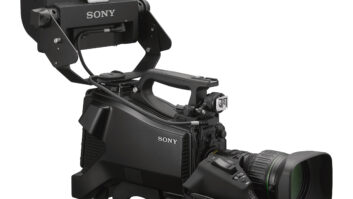In a Spanish first, RTVE (Radio Televisión Española) broadcast a live television production using 4K technology to achieve cinematic image quality.
Aiming to switch to HD while maintaining previous production workflows and enable remote control of the cameras and production with the usual RCPs, the project team behind Los Conciertos de Radio 3 replaced 2/3 format SD cameras with Sony FX9 full frame sensor cameras.

Ahead of the migration to HD, a study was made of the different sensor sizes the camera would allow (full frame and Super35), affecting, for example, viewing angles, zoom capabilities, bokeh effects or depth of field, with the necessary adaptation in the operation of new lenses.
The larger sensor size on Sony’s FX9 allow the camera to capture more light and detail, delivering sharp images and expanded dynamic range, resulting in more balanced and detailed images, less noise and richer, more natural colours, said Sony.
During the live broadcast, the large-format sensor enabled the production team to control the narrative, focusing viewers’ attention at the desired point at any given moment. Shooting in 4K ensured details were captured with clarity, said the company, providing an immersive visual experience.
The FX9’s autofocus was another key aspect in the production, automatically adjusting focus in real time to ensure the subject remained sharp. “The camera operators have had to adapt to the new way of working but, on the other hand, this has given them incredible creativity. The fast autofocus reacts immediately to the rapid changes in a concert, allowing an unprecedented visual experience,” commented Pedro Pablo del Cura, chief producer, Los Conciertos de Radio 3.
David Anaya, channel and key account manager regional sales south at Sony added, “We have worked with RTVE for many years and this knowledge has given us a clear understanding of the challenges and the ability to provide them with the best solution for their live programme. For more than 26 years, Los Conciertos de Radio 3 have offered a space on public radio and television with artistic contributions from established groups, but also from new talent, and for us it has been a privilege to walk with them on this path towards such a pioneering image quality and cinematographic style.”







